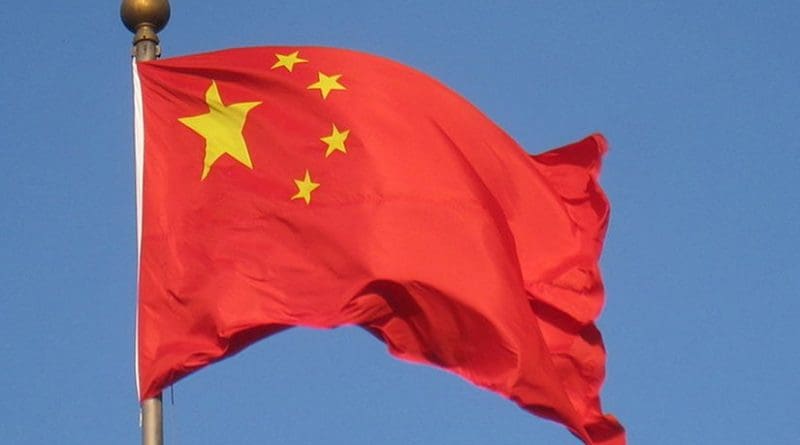Liberal World Must Stand Up And Be Counted, Or Step Aside And Watch Pax Sinica Unfold – OpEd
By Observer Research Foundation
By Samir Saran
“Indo-Pacific” is in the news. The US has renamed its Pacific Command to the Indo-Pacific Command, the shared regional vision outlined by India and Indonesia has emphasised its centrality, and the region’s political importance to India was at the core of the expansive foreign policy speech delivered by Prime Minister Narendra Modi in Singapore. All of these are a response to the spectacular rise of China. If this points to a future concert of powers in the region to balance Beijing’s power play, it will be an important yet insufficient measure in reaction to the Chinese project that connects Asia and Europe.
Covering 35% of the earth’s surface, Eurasia is home to five billion people living in over 90 different countries and producing nearly 70% of global GDP. For millennia conquest, trade and migration have organically bound Asia and Europe – the ebb and flow of great civilisations across this vast landmass spawned myriad political and economic dynamics of global history.
Only in the recent past, in historical terms, have these been interrupted. The Industrial Revolution in Europe and the subsequent colonisation of Asia and Africa created an artificial divide, concentrating economic and military power in ‘the West’.
As history repeats and Eurasia coheres, the outlines of a new world order will be defined by who manages it and how it is managed. It is in this supercontinent that the future of democracy, of free markets and global security arrangements will be decided. And there are three key factors influencing this.
The first, to borrow a phrase from Robert Kaplan, is the revenge of geography. As much as Eurasian integration is organic, its current ‘avatar’ is decidedly Chinese. Having assessed that the divide between Europe and Asia was an artificial, modern and ‘Western’ construct, China is doing what no other power had the appetite for: conceive of, define and then manage Eurasia.
The Belt and Road Initiative (BRI), Beijing’s choice of instrument, is creating sprawling networks of connectivity projects – each designed to embed dependency on China’s economy into this geography. Simultaneously, BRI dilutes the importance of the landmass’s sub-regions, thereby upsetting settled balance of power arrangements.
India and the European Union (EU), for example, are struggling to curb China’s creeping influence on their sub-regional political, economic and security conversations.
China is relentless in pursuing this project: building infrastructure, facilitating trade, and creating alternative global institutions. Surreptitiously, China also exports its political model: “capitalism with Chinese characteristics” – a unique blend of state capitalism and authoritarianism. Unless liberal democracies propose an alternative in Eurasia that effectively addresses the infrastructure needs of countries in Asia and Africa, China’s proposition will succeed.
Here lies the second factor: the revenge of democracy. Whether it is the US, EU or India, democracies are more polarised than ever before. The Pew Global Attitude Survey consistently records that trust in democratic governments is at an all-time low. More than ever it appears that liberal democracies are bogged down by domestic crises, leaving them little energy for strategic planning. At a juncture when China’s timelines are decadal, democracies are struggling to look past their next election.
And the final factor, demography, is a double-edged sword for the entire region – especially for China. For many Eurasian countries, BRI’s economic benefits are obvious. However, in an era when nationalism is the defining mood of politics, China’s presence can be unwelcome.
At home, demographic pressures might force Beijing to reconsider its ability to deliver. As younger Chinese move up the income ladder, their expectations from their government will increase. Simultaneously, the preponderance of single young men in urban regions and ageing rural populations makes Chinese society susceptible to violence and unrest. What will these demographic pressures portend for the project of Eurasian integration? Will the Chinese state have the political capital to recklessly buy influence across the world? Will demographic complexities allow others to cobble together a viable counter to the Beijing consensus?
The US has expended blood and treasure over the past nine decades to maintain its privileged position in these two regions. Russia, the original Eurasian superpower, is reduced to a glorified policeman, or more charitably, a crafty risk management consultant for Chinese expansionism. And EU can either choose to be an actor or be acted upon, one slice at a time.
It is critical that all of them, and more particularly India and the US, imagine an arrangement beyond the Indo-Pacific, into the heart of Eurasia. China’s continental-sized poser requires a supercontinental answer. It is for the liberal world to stand up and be counted, or step aside and let Pax Sinica unfold.
This commentary originally appeared in The Times of India.

